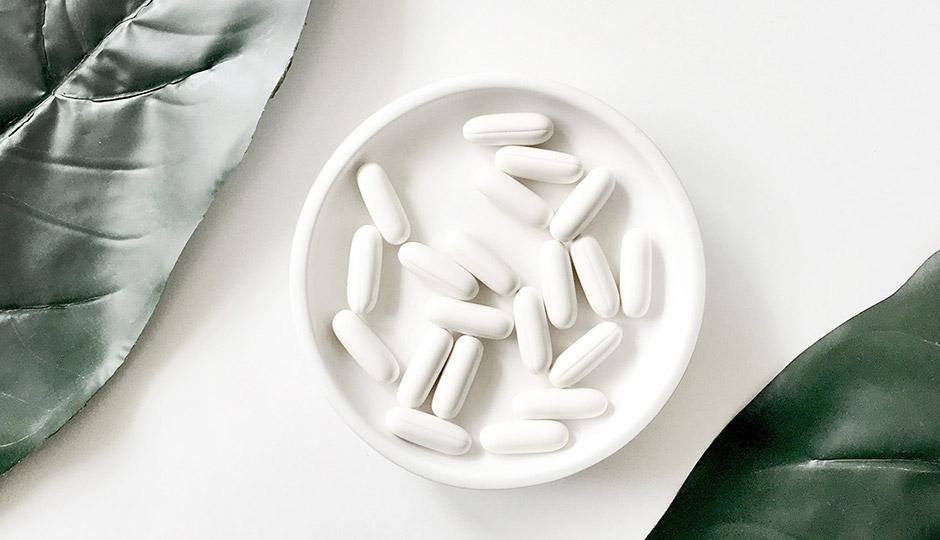Progesterone is a hormone made in the ovaries and the adrenal glands. Found in women, and a very small amount in men, progesterone plays a vital role in the hormonal balance that most people aren’t aware of. Progesterone is the first hormone to decline as we age. In our thirties, women start to feel the decline with ovulation, which can bring about the symptoms of PMS and perimenopause. Some of those symptoms can include migraines, bloating, and depression.
Estrogen, the primary female hormone, with smaller amounts in males, is one of the most powerful hormones of the body. It’s so powerful it’s actually given a bad reputation for being the cause of the most problematic side effects of perimenopause and menopause, such as hot flashes, night sweats, weight gain, fatigue, depression, heart palpitations, bloating and puffiness, extreme irritability, and disturbed sleep. That’s a lot of symptoms! Can you see why estrogen is labeled, the “Bad Guy” of the hormones when women have to deal with symptoms that are so distressing? Estrogen is what makes women feel like women, giving them their sexual qualities, and also libido when combined with testosterone.
Now, back to progesterone. If estrogen is labeled the “Bad Guy”, then progesterone rides in on its white horse, coming in as the “Good Guy”. Well, maybe a white horse is a bad analogy since artificial progesterones such as Premarin are derived from actual horse urine. Horse urine is not compatible with our own human bodies, so the chances of side effects would be more understandable given the circumstances. Some women take synthetic hormone replacement and never really feel as if their symptoms are fully under control, not to mention the unhealthy nature of how they are made. Bioidentical progesterone, made from wild yams, is the healthiest form of natural progesterone, slightly altered to match our own receptors. Progesterone is what our bodies make naturally to counteract the negative side effects of estrogen by giving it the calming effect that it needs. Progesterone helps calm symptoms such as palpitations, helps your bones rebuild, burns off the excess fat, and is a natural diuretic. It repairs mental clarity and “brain fog”, and protects us from cancer. So, you can see why a form that is identical to what our body makes will do a better job than a synthetic form that does not match what our body makes. Our body can work better when it has the right parts in place.
Here’s where the balance comes in. If there is not enough progesterone, the effects of estrogen dominance can take over, giving all the symptoms of the “Bad Guy” estrogen as mentioned above. Hormonal balance, by adjusting your dosages according to lab work and symptoms combined, will keep a feeling of well being and eliminate the negative symptoms. Excess weight can also just seem to melt off while balancing occurs, causing a sense of better movement and less pressure on the bones and joints. Can you see why progesterone can be the “Good Guy” and save the day? When adding the normal levels of testosterone in the mix of all the sex hormones, the balance is complete. (We will save testosterone for a later time…more to come.)
When women start getting the “Bad Guy” symptoms of estrogen, they don’t always have the knowledge to know what it means. They may think they need more estrogen as they have the uncomfortable symptoms of menopause, when in fact, it is possible that they may actually have plenty of estrogen. It could be that they only lack enough progesterone for the balance. This is where getting labwork at appropriate intervals comes into play. Symptoms of hormonal imbalance can be tricky, as some signs and symptoms of imbalance can overlap. Progesterone is the safest way to counteract the excess stressors that estrogen can cause. The effects of adding progesterone for balance can be almost immediate relief of some symptoms and can get even better over time. The feeling of well being, better sleep and rest, and mental clarity may be the first things noticed when low progesterone is treated with progesterone supplementation.
With progesterone, it is best not to take it every day, but to take some days off each month to maintain a cycle effect, the way our bodies were naturally meant to be. It also gives our receptors a break and time to regroup in order for our hormonal cycle to work properly. Our hormones will still fluctuate when taking hormonal replacement due to the fact that the human body is always moving, having stressors, and reacting to what is going on around us physically and emotionally. That is a fact of life. Our bodies will still try and maintain normal processes, so some hormonal fluctuation is normal. Bioidentical progesterone is most commonly given as capsules or in a topical cream form.
Now that the role of progesterone is explained, we hope that you have a better understanding of learning why the key to proper balance is to find out what your hormone levels are and compare it with your symptoms for an accurate diagnosis and treatment. Get levels done every 3-4 months, or as recommended by the doctor, since your hormone levels can and will fluctuate as your body is supposed to do. Once you find your “sweet spot”, the levels that are a healthy normal range while relieving your symptoms, you may not need to have adjustments in your dosages very often. Most of all, know that hormonal balance can be obtained. You don’t have to dread menopause. You can look forward to a very active life and feel great as you age.




